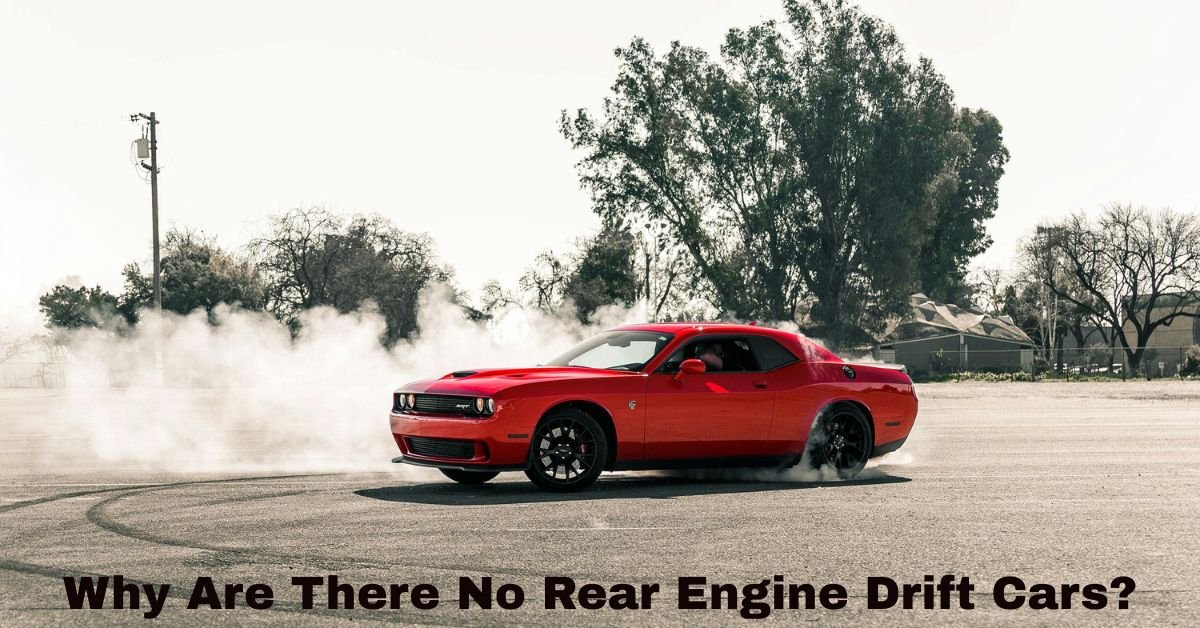Drifting is one of the most visually thrilling motorsports out there—an elegant dance between tire smoke, throttle control, and chassis balance. While drift cars come in all shapes and sizes, one configuration is noticeably absent from the scene: rear-engine vehicles. Why don’t we see Porsche 911s or old VW Beetles tearing up the track in a cloud of sideways glory?
The answer comes down to physics, balance, and practicality.
Why Are There No Rear-Engine Drift Cars?
1. The Basics of Drifting
Before diving into engine placements, it’s important to understand what drifting demands from a car. At its core, drifting involves oversteering through a corner, intentionally losing traction in the rear wheels while maintaining control of the car’s direction with throttle and steering input. To do this effectively, a car needs:
- Rear-wheel drive (RWD)
- A well-balanced chassis
- Good weight transfer characteristics
- Predictable handling
- Lots of torque
Cars that dominate the drift scene, like the Nissan 240SX, Toyota AE86, and BMW E36, are almost always front-engine, rear-wheel-drive (FR) layouts. There are some mid-engine RWD examples (like certain Lotus or MR2 builds), but rear-engine setups are virtually nonexistent in drifting.
2. What’s a Rear-Engine Car?
In a rear-engine layout, the engine is located behind the rear axle. Famous examples include:
- Porsche 911
- Volkswagen Beetle
- Smart Fortwo (yes, really)
In contrast, mid-engine places the engine front of the rear axle but behind the driver. Mid-engine cars have their own set of pros and cons in motorsports, but rear-engine cars are even more extreme in terms of weight distribution.
3. Weight Distribution: The Key Problem
One of the biggest challenges for rear-engine cars in drifting is weight distribution. These cars have most of their mass over or behind the rear axle, which significantly alters how they behave when traction is broken.
- In drifting, you want the rear to break traction predictably, but not uncontrollably.
- Rear-engine cars tend to have a pendulum effect—once the rear breaks loose, it’s harder to regain control because the mass wants to keep swinging out.
- This makes precise control very difficult, especially when transitioning between drifts or maintaining angle through a long corner.
In contrast, front-engine RWD cars have more balanced weight distribution (typically 50/50 to 60/40), making it easier to control slides and manipulate weight transfer with throttle input.
Must Read: What Type Wrenches Are Used On BMW Engine?

4. Cooling and Packaging Issues
Rear-engine cars are also notoriously difficult to work on and modify for motorsports. The cramped rear layout can create problems with:
- Cooling: Keeping the engine and transmission cool during prolonged drift runs is critical. Rear-engine setups often have limited airflow.
- Maintenance access: Drifting puts extreme stress on mechanical components. Easy access is essential for frequent repairs and adjustments.
- Aftermarket support: Very few aftermarket parts exist to convert or reinforce rear-engine cars for drifting.
5. Torque and Suspension Tuning
Drifting demands high torque output, especially in the low to mid RPM range. Many rear-engine cars (like the Beetle or Smart) were designed for economy, not power. While modern 911s have strong engines, they’re expensive to modify and repair—a big downside in a sport where cars routinely get wrecked.
Furthermore, it is challenging to adjust the suspension on a rear-engine platform. Since most of the weight is on the rear, the front wheels (which do the steering) can feel light and unresponsive. You need precise steering control in drifting, and this imbalance doesn’t help.
6. Cost and Community
Let’s not ignore the role of community and culture. Drift culture is deeply rooted in accessible, affordable cars that are easy to build, break, and fix. Rear-engine cars don’t fit that mold. A Porsche 911 might look cool going sideways, but the cost to get it drift-ready—and keep it that way—isn’t practical for most enthusiasts.
Conclusion
It’s not that rear-engine cars can’t drift—they absolutely can under the right conditions. But the physics, tuning challenges, and cost make them a poor platform for consistent, competitive drifting. That’s why you don’t see them at Formula Drift events or grassroots competitions.
In drifting, the goal is balance, predictability, and control—qualities that rear-engine layouts struggle to provide. Until we see a radical shift in technology or car design, rear-engine cars will likely remain the outliers in the world of drift.
